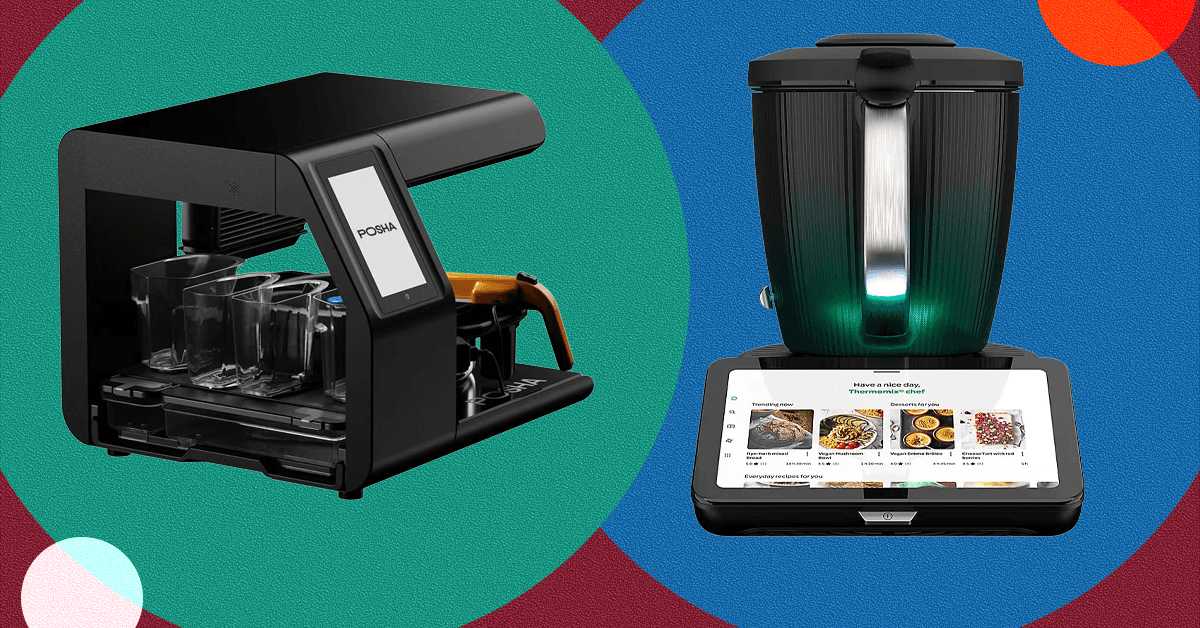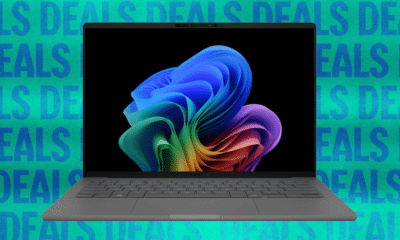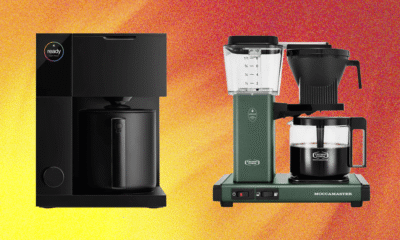Tech
Google’s Black Friday Deals Are Live for Pixel Phones, Nest Hardware, and More
Google Pixel deals abound! The company has kicked off its Black Friday promotions on all of its Pixel hardware, from the value-friendly Pixel 9a to the flagship Pixel 10 Pro XL. There are even discounts on the brand-new Pixel Watch 4 and Google’s wireless earbuds. We’ve rounded up the best Google Pixel discounts this shopping holiday, and even included a handful of deals on Nest hardware if you’re inclined to Google-ify your home.
Check out our Best Early Black Friday Deals for more great deals on WIRED-tested gear.
Featured in this article
Google Pixel Phone Deals
Read our Best Google Pixel Phones guide for more details on these products.
Our top smartphone recommendation for most people, the Google Pixel 9a (9/10, WIRED Recommends) is a steal at $399. You get all the accouterments you’d want in a phone, from wireless charging and a reliable dual-camera system to solid day-long battery life and excellent performance for the money. Google also promises 7 years of software support, which is unmatched at this price, and there’s plenty of fresh software smarts that you’ll find useful every day, like Call Screening, which will cut down the number of spam calls you get.
A much better value than its predecessor, the Pixel 10 (8/10, WIRED Recommends) is one of the few smartphones at its MSRP with a triple-camera system that includes a 5X optical zoom camera. 5X! You can zoom in and capture your kid on stage at the school holiday concert in pristine quality. That makes it an even better buy at $599. Performance is a step up from the Pixel 9a, as is the selfie camera, and there are a few new exclusive software features—like the ability to AirDrop with iPhone owners. It’s the first Pixel (and flagship Android phone for that matter) with Qi2 magnets for faster wireless charging and access to the MagSafe accessory ecosystem.
If you want Google’s best hardware, look no further than the Pixel 10 Pro or Pixel 10 Pro XL (8/10, WIRED Recommends)—the only differences between the two are screen size and battery life. Scratch that, the XL also supports the Qi2 25-watt standard, allowing it to charge even faster from a compatible Qi2 wireless charger. Outside of that, performance goes up a notch from the base Pixel 10 because of the vapor chamber cooling system, which means demanding games will run a little better. The camera quality is sharper , especially the 5X telephoto and primary camera, and you can use Google’s Video Boost technology for better quality video clips. This is the best Google has to offer right now.
Want a folding phone? Google’s Pixel 10 Pro Fold (7/10, WIRED Recommends) is rated to withstand 10 years of folding and is one of the few folding phones with an IP68 dust- and water-resistance rating. (Just, maybe don’t bend it like this.) I can say that I have dropped this phone multiple times on asphalt, and it only has a few scratches on the frame. I think Samsung did a better job with the Galaxy Z Fold7 this year—it’s much thinner and lighter—but the Pixel 10 Pro Fold is still a solid handset if you prefer Google’s software smarts. The cameras are similar to what you’ll find in the Pixel 10, but you don’t get the same great image quality as the Pixel 10 Pro, despite “Pro” in the name.
You don’t always need the latest and greatest. Google has discounted last year’s Pixel 9 series (9/10, WIRED Recommends), though only some of these are worth the money. For example, the Pixel 9 Pro Fold is only $150 less than the Pixel 10 Pro Fold; buy the latter instead. The best deal here is the Pixel 9 at $499, which will still offer a slightly nicer experience over the Pixel 9a, though if you can spare an extra $100, you should opt for the Pixel 10.
Deals on Pixel Cases and Accessories
Check out our Pixel 10 Cases and Pixel 9 Cases guides for more recommendations.
Tech
These Beats Headphones Are Marked Down to $150 for Black Friday

Say what you will about Beats fans, but at least they know what they like. These headsets and earbuds are instantly recognizable for their slick styling and bass forward sound profile. If that sounds like your speed, the Beats Studio Pro are currently marked down as low as $150 Amazon, depending on your color preference. I spotted them at the lower price in matte white, sand gray, and dune, with a slightly higher $170 price tag for the remaining colors, though your availability may vary.
While the Studio Pro lack some of the Apple-exclusive features you get with AirPods, for example, the upside is that they’re much more friendly with Android devices. Both platforms get access to one-touch pairing and the helpful Beats app, while iPhone owners also get the benefits of Hey Siri and Find My Device. The other features are a bit of a mixed bag, with a decent battery life of up to 24 hours with ANC on, or 40 with ANC off, but no auto pause when you take them off, or multi-point pairing beyond Google’s Chromebook and Android option.
Like most headphones from Beats, the sound profile is decidedly bass-forward, but Apple’s ownership has tempered that tendency over the last few years. As a result, this generation is more balanced than previous eras, with our reviewer Ryan Waniata complimenting the expansive sound stage and sharp details. Unfortunately, most Beats headsets don’t have any equalizer, and the Studio Pro are no different. For better or worse, you’re stuck with how they sound coming out of the box. These at least support high-resolution audio, up to 24-bit/48-kHz, but only in the wired USB-C mode.
For the Beats enthusiast looking for an upgrade or a second headset for the gym, these are a solid option at a deeply discounted price. They lack some of the richer and more advanced features found on more expensive headsets, but that may be the right compromise for some folks who just want something simple that works every time. If you’re not sure you can stand the bass, make sure to check out all of our favorite wireless headsets.
Tech
Two Kitchen Robots Turned Me Into Their Prep Cook for Thanksgiving

The holiday is still almost a week away, and I’m sick of Thanksgiving. I’ve already made four rounds of mashed potatoes, three of mac and cheese, and three turkeys (with more still waiting in my fridge) as part of testing smart probes to help smoke turkeys outside and preparing seven-course holiday meal kits for friends and family.
I was eager to finally outsource some of the cooking by testing two very different robo-chef devices, the Thermomix TM7 and the Posha kitchen robot. Both promise to plan my meals and also do most of the cooking, which sounds pretty good to me.
The Thermomix descends from a German device launched in 1968—a time when the best-known robot chef was cartoon Rosie on The Jetsons—that was essentially a blender with a heater. It’s since caught on big in countries from Italy to Portugal to Australia, and over the years it’s added multi-tier steaming, baking, proofing, a touchscreen, an encyclopedic recipe app, and a whole lot of smart features. WIRED reviewer Joe Ray called 2020’s last-generation Thermomix TM6 (9/10, WIRED Recommends) the “smartest of the smart kitchen.” The newest version, the seventh-generation TM7, was released in August and looks like a giant trophy with a computer screen. It retails for $1,699 and its goal is to replace almost every appliance in your kitchen. It’ll even happily order groceries for you on InstaCart.
The newest robo-chef entrant is Posha, a Silicon Valley-via-Bangalore startup device that aims at truly autonomous one-pot cooking, once you’ve chopped up the proper ingredients into little bins. The Posha kitchen robot was released in January at a price of $1,750 and promptly sold out, as has each successive batch. The device comes complete with a robot stirring arm, and a camera to monitor moisture and browning. Press a button, and Posha will add ingredients at the appropriate moment, spice and stir your food, add water and oil, and cook it down, all without your participation.
I used both the Posha and Thermomix to make a spread of Thanksgiving sides: candied yams, mashed potatoes, mac and cheese, brussels sprouts, and a more complex wild card entry chosen because I thought my Aunt Katherine might like it—and assessed cooking experience overall. Consider it a robo-chef face-off.
Here is my experience with each of the Thermomix and the Posha—and how each fared on five Thanksgiving side recipes.
Cooking Experience With Thermomix
The Thermomix has almost 60 years of history. This is a good thing. It began as, essentially, a blender that can cook. It is still a very powerful blender that can cook. Lord, it makes pesto or mashed potatoes as quickly and easily as anything. I stood by in actual awe of its raw cooking-blending power.
But it’s also evolved into a whole lot more, an all-in-one device that purports to replace just about every appliance in your kitchen. Today’s Thermomix has become a beast of multifarious functionality.
Tech
Protecting the defenders: Addressing cyber’s burnout crisis | Computer Weekly

Nobody embarks on a career in cyber security expecting an easy ride. It’s widely recognised that protecting critical digital infrastructure is high-pressure and high-stakes work.
For many of us, that’s part of the buzz. Every day, we tackle complex challenges, address high-stakes problems, and (hopefully) make a real difference – but who will protect cyber professionals from the risk of burnout?
It seems to me that this industry continues to reward heroic and even superhuman effort, but often fails to take into account the limits of human resilience. Think, for example, of the brutal all-nighters pulled by incident response teams, often for several consecutive nights.
This profession faces a burnout crisis, and the warning signs have been sounding loud and clear for some time now.
Back in 2023, market analyst firm Gartner predicted that by 2025, nearly half of cyber security leaders would change jobs, with 25% of these taking different roles entirely due to work-related stress. In a 2024 survey conducted by the Chartered Institute of Information Security (CIISec), over half (55%) of respondents reported that the stress of the job interferes with their sleep and keeps them awake at night. And the 2024 Workforce Study from industry membership organisation ISC2 revealed a four percentage-point dip from the previous year’s study in favourable job satisfaction rate, down to 66%.
How can we do better?
We have to do better. To my mind, a good first step would be a more general acknowledgement that various factors have combined to create the perfect recipe for mental and emotional exhaustion in cyber security professionals.
For a start, there’s the constant pressure exerted by an increasingly perilous threat landscape. Then there’s the strain of persevering in the face of skills gaps and budgetary constraints. And that’s not to mention the challenge of managing the expectations of colleagues from elsewhere in the organisation, who struggle to understand that the success of an IT security team is defined not by a total absence of cyber attacks (improbable), but by that team’s response to attacks (inevitable).
In short, burnout is not a weakness, but a consequence of unsustainable work conditions. Recognising that fact is a vital first step towards meaningful change.
From there, we must take action. It’s no secret that we are navigating an environment that’s only getting noisier in terms of the frequency and increasing sophistication of attacks. But that’s just a symptom of a deeper root cause – the way CISOs and their teams work is no longer effective. We’ve been taking an old approach to a new world and it’s unsustainable. We need to entirely rethink how we secure our IT infrastructure.
As a CISO, this is a topic I think about a great deal. A responsible CISO is someone who protects their team members from the risk of burnout and this is a topic I have previously covered for Computer Weekly. As I wrote back in 2023, a big part of my role is ensuring that our incident response plans include adequate provisions for the humans working on the frontline, safeguarding their resilience and their ability to ‘bounce back’ once a high-pressure situation has been resolved.
The answer, in part, lies in using the latest technologies to keep team members in the loop. This is a culture that values agility and creative problem-solving, but doesn’t always provide employees with tools that give them the insight and context they need to put those skills to the test and flex their decision-making muscles.
In this noisy environment, we must use smarter technologies to filter the noise, amplifying the most serious alerts and muffling unimportant ones. When those serious alerts can be heard, we can prioritise our responses accordingly. Behavioral analytics and AI-driven insights play a big role here, helping surface anomalies and trends that warrant investigation.
Security teams may face thousands of alerts each day but can investigate only a fraction, leaving critical ones missed and energy wasted on false positives. The right tools focus human effort where it has the greatest impact.
Staying sharp and resilient
Organisations urgently need adaptive security strategies that evolve as fast as attacks do. This enables IT security teams to keep one step ahead, stay in control and remain sharp, responsive, and resilient against burnout.
This is particularly important at a time when the barrier to entry for cyber crime is dropping fast, allowing far more malicious actors to get involved, regardless of their levels of technical skill. In Elastic’s 2025 Global Threat Report, we saw a 15.5% increase in generic threats, a trend likely fueled by adversaries using large language models (LLMs) to quickly generate simple but effective malicious loaders and tools.
That means that the volume and variety of malware that organisations face is increasing dramatically. For that reason, they must rely less on static signatures to guide their responses and more on behavioural analytics and AI-driven detection to automatically identify and stop the flood of novel threats at scale.
The cyber security profession attracts some of the smartest, most tenacious, and most results-driven individuals in today’s workforce – and companies regularly send these people into battle with outdated weapons. Instead, they should equip them with newer tools that not only take some of the strain involved in the work, but also help them to finetune their responses.
Protecting cyber security professionals from burnout will make a significant contribution to any organisation’s overall security posture. In today’s cyber security environment, resilience should not only mean defending networks, but also protecting the defenders themselves.
-

 Tech6 days ago
Tech6 days agoNew carbon capture method uses water and pressure to remove CO₂ from emissions at half current costs
-

 Politics1 week ago
Politics1 week agoBritish-Pakistani honoured for transforming UK halal meat industry
-

 Business6 days ago
Business6 days agoThese 9 Common Money Mistakes Are Eating Your Income
-

 Sports6 days ago
Sports6 days agoTexas A&M officer scolds South Carolina wide receiver after touchdown; department speaks out
-

 Business7 days ago
Business7 days agoWhat’s behind Rachel Reeves’s hokey cokey on income tax rises?
-

 Sports1 week ago
Sports1 week agoApple scrapping MLS Season Pass service in ’26
-

 Tech1 week ago
Tech1 week ago$25 Off Exclusive Blue Apron Coupon for November 2025
-

 Fashion1 week ago
Fashion1 week agoAfter London, Leeds and Newcastle, next stop Glasgow for busy Omnes




































